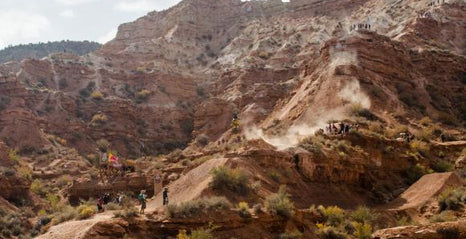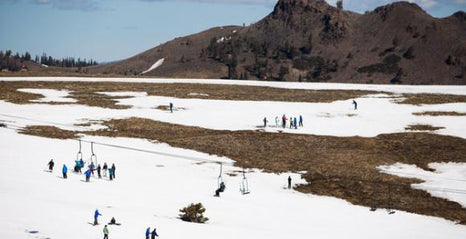The Fight To Save Snow

Very few have heard tales of the adventures of Snow City and fewer still ever visited the tiny town at the peak of its reign. Located among the pines above Cannon Mountain’s “pony slope,” Snow City was once home to a youthful and unsullied crew of individuals. I doubt anything remains of Snow City today, but years ago it was my home for the few hours of daylight that remained on winter weekends after ski practice. A city made of snow; we carved our homes from the snowpack and decorated rooms with pinecones and boughs from the trees that grew densely around us, allowing the resort to feel miles away. As our planet’s temperature rises and snowlines recede up the mountains I begin to wonder about the fate of Snow City and others that I imagine exist similarly hidden away in the hills. I have always found my home to be among the mountains, tucked in the snow, but what if the snow were to disappear? What if not just Snow City melted away, but the whole of the Cannon Mountain snowpack did too, along with that of other ski areas in the Whites? What if no resort was immune to the changing climate and the slow decline of winter’s snowfall?.
According to an article in the Boston Globe, Climate Change Threat Looms Over Ski Industry, half of the Northeast’s one hundred and three ski areas will likely have to close in the next thirty years simply because it will be too warm and there won’t be enough snow. Several peer-reviewed scientific papers predicted climate change would wipe out the snowpack in the Western United States by twenty-five to one hundred percent by 2100. According to Dr. Noah Diffenbough at the Nature Climate Change Journal, if temperatures continue to rise as predicted, thirty percent of winters in the Northern Hemisphere will bring seasonal snowfall below current record low levels. Do these statistics frighten you as much as they frighten me? Apparently, climate change is not something that is going to affect only our children’s children’s children... I know that we have to take action now in order to preserve the future of our planet, but who knew the ski industry on our planet could be doomed so soon? Because of climate change the future of skiing could be very much in trouble come thirty or fifty years from now and, as soon as that may seem, the truth is that the ski industry is in trouble and has been for years. The 2011-2012 ski season was one of the warmest on record in the United States. Half of the nation’s ski areas opened late and almost half closed early. Shoot! What if my kids want to be ski bums after college like I am right now? What if I want to keep being a ski bum for the next couple years? A warming planet means less snowfall and unstable snowpacks. It means fewer visitors to the resort and fewer jobs. Not to mention fewer powder days.

Ski resorts also aren’t the greenest operations on earth. In 2009 Vail alone spent $27 million on energy. And as skiers our daily energy use isn't so great either. A single skier averages about twenty kilowatt-hours of energy consumption per day. To give you a comparison that’s the same amount of energy as a refrigerator uses in two weeks. As green as we may think we are, it appears that as skiers (and snowboarders) we inevitably contribute a great deal to this polluting and warming process that is leaving us snowless.
So what can we do about it? I can definitely vamp up my recycling efforts, remember to turn the lights off when I leave a room, but I know that’s not enough to keep the temperature of the planet from rising 3.6 degrees Fahrenheit in the next forty years. Humans have a great deal of power when it comes to destroying. We rip down forests, suppress rivers with damns and dump waste into our oceans. But humans also have a great deal of power when it comes to creating. When we put our innovative minds to the task it seems we can find solutions to a great number of the world’s problems, so why should climate change be any different? A majority of skiers have a college education. Many are affluent businesspeople, philosophers, educators, engineers. This educated group of individuals wields economic power and the power to influence policy makers. As much power as humans have to destroy we also have the power to create. As I have previously noted, as skiers we contribute significantly to the pollution of our planet and we consume a great deal of energy, but as much as we consume we have an equal ability to create sustainable and renewable energy sources, particularly in the ski community. Jiminy Peak, a small mom-and-pop ski area in western Massachusetts, built a windmill to power its lifts. The turbine generates 4,600,000 kWh each year and powers approximately a third of the ski area’s electrical demands. A small Swiss resort has installed solar panels above its chairlifts and is able to power its lifts from the solar energy that is produced.

But it is not just the ski areas that need to take action. The international community of snow sports enthusiasts is 65 million strong and chalk full of affluent and influential individuals. As a community we need to rally together to decrease the cost of clean energy, to have standards for appliances and vehicles, and to create state and national energy standards. We need to incentivize the use of clean energy. Programs like Protect Our Winters (POW) and NSAA programs like Sustainable Slopes and Climate Challenge are pointing us in the right direction, but there is so much more that needs to be done and time is of the essence. If we can wake the ski community up to the fleeting timeline climate change has pressed upon our snowpack, we can use our collective influence to change policy and standards on a global scale. We are a powerful community of enthusiastic, powder charging individuals and we can use this power to push solutions to climate change into effect. I want to be skiing powder lines when I’m eighty, so let’s do all we can to ensure we save our snow.
If you want to read more about the effects of climate change on the ski community, check out DEEP: The Story of Skiing and the Future of Snow by Porter Fox. Let me leave you with a little sneak peak:
“The skiing life means living close to the Earth. It means interacting with the forces that shaped our planet and understanding the cycles that maintain it. ‘I am not saying that skiing is necessarily a valid goal, but living is. Living in a particular place in a real relationship with the earth and the sky and the living beings around you—the fourfold of Heidegger—is a valid goal, as this relationship contributes to more being. Community is sharing a particular physical space, and environment, not only with other people but with the other beings of the place and fully realizing that the needs of all the beings of that place affect how you live your life. Such an awareness of relationships is a culture of awareness.” – Dolores LaChapelle, American mountaineer

By AI Blog contributor: Maggie Edmunds


